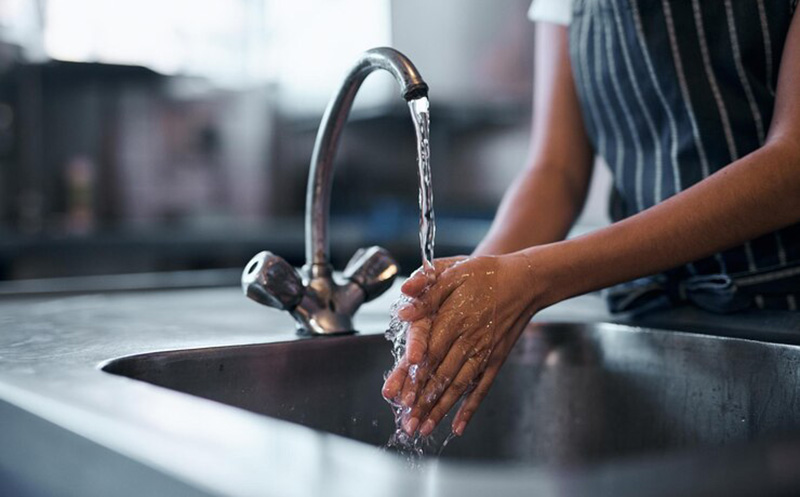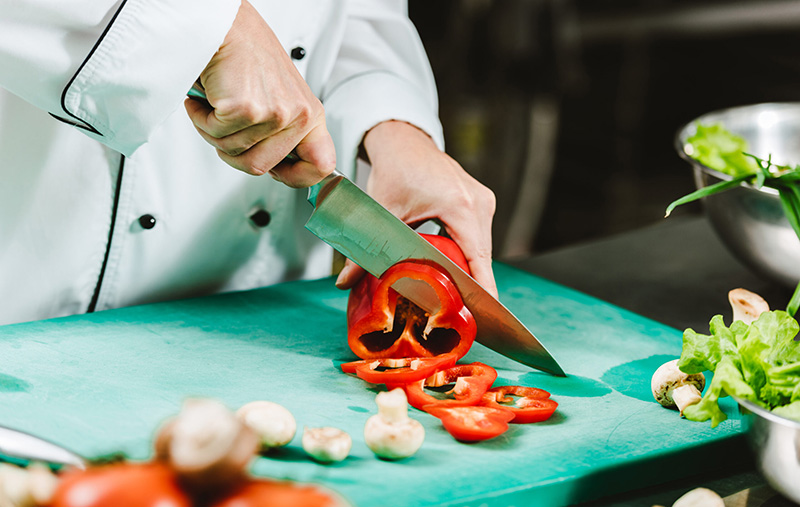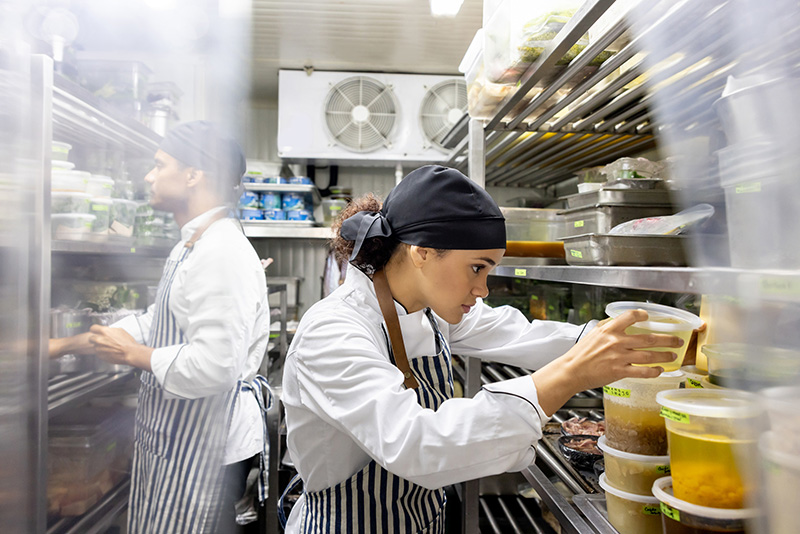How to avoid five common food safety mistakes in restaurants
In life and business, mistakes are inevitable. After all, nobody’s perfect. However, the real issues arise when we fail to learn from these mistakes. That’s why we’ve compiled a list of five common food safety mistakes often seen in a restaurant kitchen. We also give you the knowledge to avoid them, ensuring a safer and more positive dining experience for your patrons.
Improper handwashing
We’ve all been there: It’s the dinner time rush, and orders are flying in and out of the restaurant kitchen. Within the chaos, it can be challenging to maintain proper restaurant hygiene, like washing your hands. To keep food safety a priority, we cannot stress enough the importance of washing your hands.

Correct handwashing is crucial in preventing the spread of harmful bacteria and viruses. Not washing hands properly or frequently enough can transfer pathogens to food, surfaces, and other people.
A good standard to follow is washing your hands with soap and water for at least 20 seconds. Make sure you spread your fingers wide and rigorously clean between each digit. Dry your hands with a clean towel and repeat when needed.
But how robustly should you wash your hands? Visualize this: If you’ve been cutting chili peppers and then need to take out your contact lenses, how sensibly would you wash your hands after cutting the chilies? That’s how strongly you should wash your hands every time.
Thoroughly washing your hands is especially important after:
- handling raw meat,
- using the restroom,
- touching surfaces that may be contaminated, or
- touching one’s face or hair.
Develop hand-washing standards and communicate them to your staff verbally or on posters throughout your venue. Another great method is to include them in your restaurant kitchen’s daily cleaning schedule. Over time, look at how this system works and consider ways to improve your process.
Cross-contamination of food
If you have a menu with several dishes, you know how difficult it can be to keep track of all your ingredients, let alone keep them separated. This challenge can lead to the mistake of cross-contamination, and trust us, you don’t want that. Preventing the cross-contamination of food is vital to protect patrons from illness or allergic reactions.
Cross-contamination occurs when bacteria from one food item are transferred to another, typically through cutting boards, utensils, or hands.

For example, if your chefs use the same cutting board for raw meat and vegetables without proper cleaning in between ingredients, it can lead to cross-contamination. To prevent this, restaurants should have separate cutting boards and utensils for raw meat and ready-to-eat foods, and they should be thoroughly cleaned and sanitized between uses.
Preventing cross-contamination is a crucial aspect of allergen management. If you want to enhance your knowledge of preventing food-borne illnesses, our article ‘Protecting Patrons: Allergen Management in Hospitality’ can offer guidance on ways to manage allergens, such as completing a thorough risk assessment for restaurant operations.
Inadequate cooking temperatures
Gone are the days when every dish on your menu could be prepared in a single oven, fryer or saucepan. Different meals require different cooking temps and times. So, tracking how long something has been on the grill or pan can be tricky. This can lead to undercooked food, which may pose a health threat to patrons through the spread of bacteria, not to mention an unhappy customer.
For example, undercooked poultry or ground beef can contain dangerous pathogens like Salmonella or E. coli. Restaurants should use food thermometers to ensure food is cooked to the appropriate internal temperature. It also helps to have an idea of what the best internal temperature is for food safety.
Here is a rough guide to ideal internal temperatures as recommended by the USDA:
- Beef, Veal, and Lamb (Steaks, Roasts, and Chops): 145°F (63°C) for medium-rare, 160°F (71°C) for medium, and 170°F (77°C) for well-done.
- Ground Meat (Beef, Pork, Veal, Lamb): 160°F (71°C).
- Poultry (Chicken, Turkey, Duck): 165°F (74°C) for all cuts, including ground poultry.
- Pork (Chops, Roasts): 145°F (63°C) with a three-minute rest time.
- Fish: 145°F (63°C) or until the flesh is opaque and separates easily with a fork.
- Eggs: Cook until the yolk and white are firm. For dishes containing eggs, such as casseroles, the internal temperature should reach 160°F (71°C).
- Shellfish: Cook until the flesh is opaque and separates easily with a fork.
Cooking high-risk foods to the correct internal temperature can help avoid this common food safety mistake. Make sure your chefs check the temperatures of each dish before they are delivered to your patrons. They can do this by inserting temperature probes into the thickest part of the portion.
Improper food storage
Each ingredient within a restaurant kitchen should be stored correctly to prevent them from going off. Storing foods at incorrect temperatures can lead to the growth of harmful bacteria, causing spoilage and potential foodborne illness.

Here, prevention is the best solution. For example, perishable foods should be refrigerated promptly to prevent the growth of bacteria. As soon as you or your kitchen staff get an order of fresh shellfish, store it in the fridge and only remove it when you’re preparing the dish. Don’t leave it on the counter to fester throughout the day or night.
Also, rotate your stock to ensure that older items are used first. This helps prevent food spoilage and allows you to use the freshest ingredients.
The reality is sometimes refrigeration can malfunction, and if the kitchen crew doesn’t notice this swiftly, food can spoil. Potentially costing you and the business unnecessary loss. This is where a real-time, remote temperature monitoring system can be a game-changer. A dedicated food safety app can provide instant alerts if a temperature anomaly is detected, helping your team act quickly and avoid costly spoilage.
Poor personal hygiene
Finally, a huge mistake many kitchens and kitchen staff make is an overall lack of proper hygiene. Beyond handwashing, employees should practice good personal hygiene to prevent the spread of bacteria from themselves to food. This includes:
- wearing gloves when handling ready-to-eat foods
- covering hair with a hat or hairnet, and
- wearing clean uniforms.
Also, employees who are sick should not be allowed to work with food, as they can spread illness to customers – not to mention the fact they need to rest and recover. Encouraging your staff to take time off when they’re sick is equally important. This helps build a stronger workplace culture and shows your staff that you care about their health.
How Operandio can help you avoid these mistakes
As the old saying goes, It’s not how we make mistakes but how we correct them that defines us. To help you prevent these mistakes from occurring – or repeating, Operandio’s digital-based task management and temperature monitoring solutions can help you. Book your free demo today.


